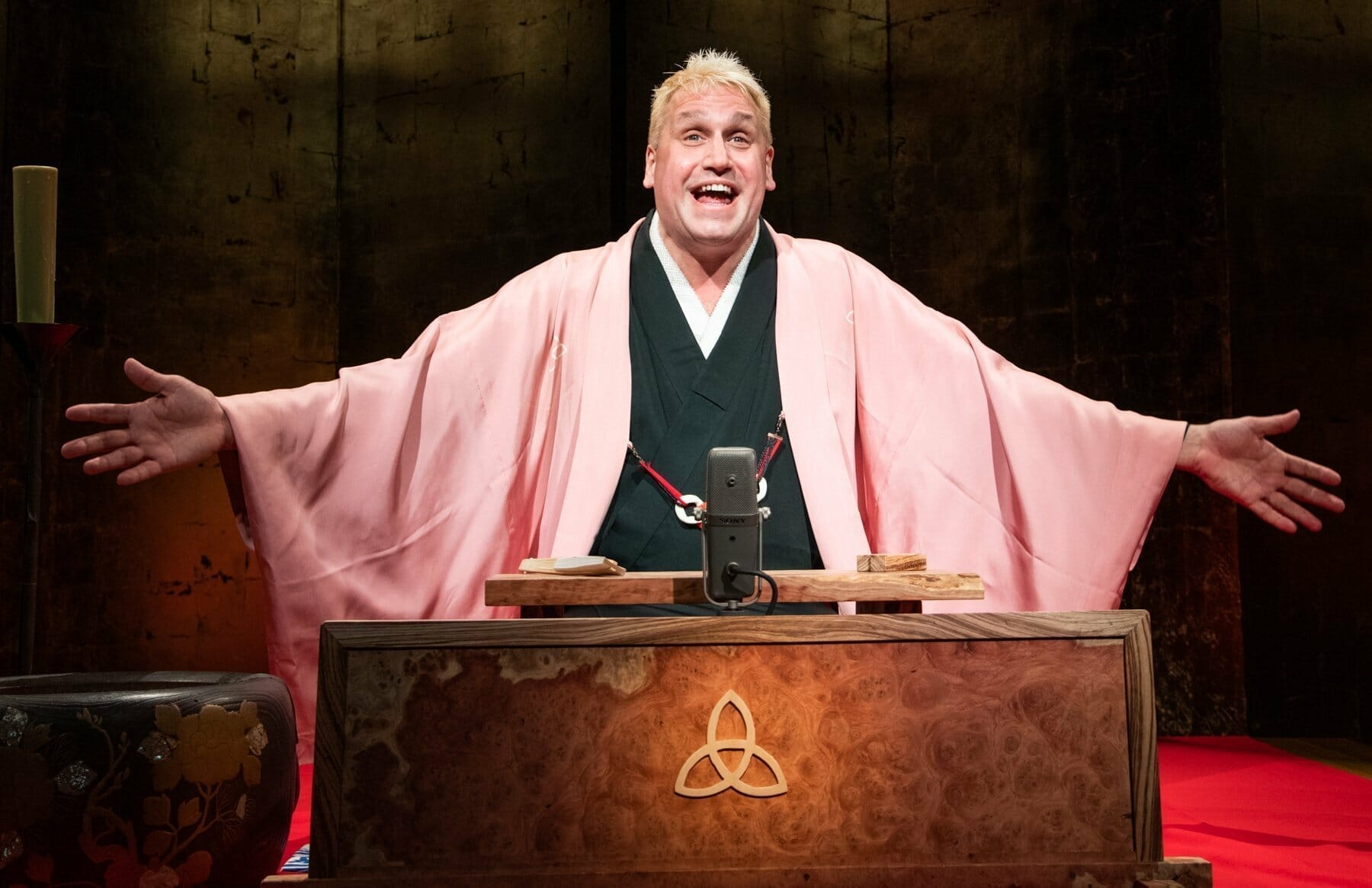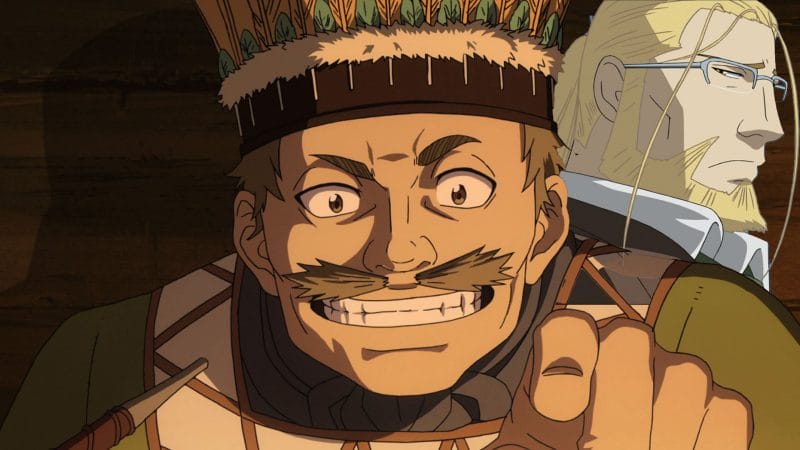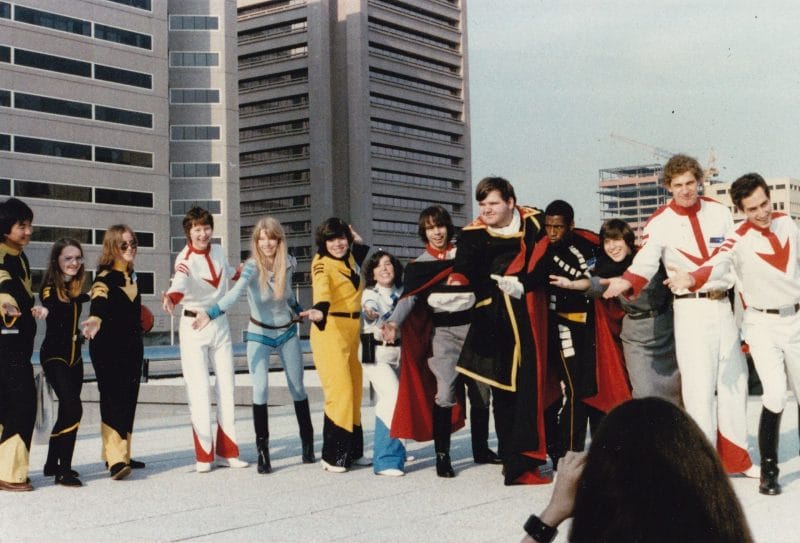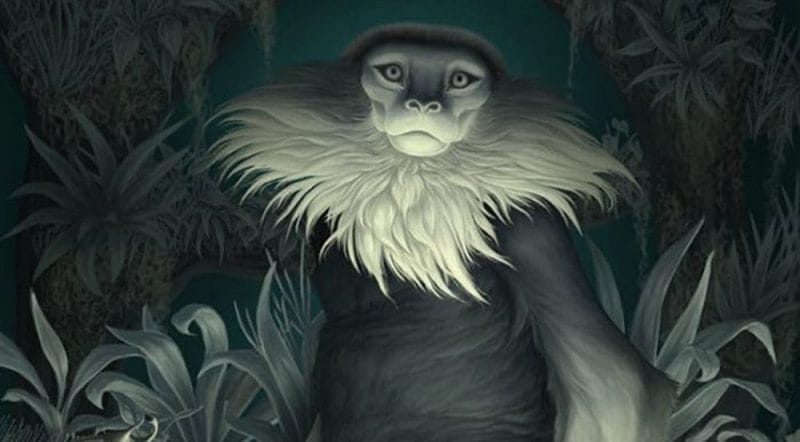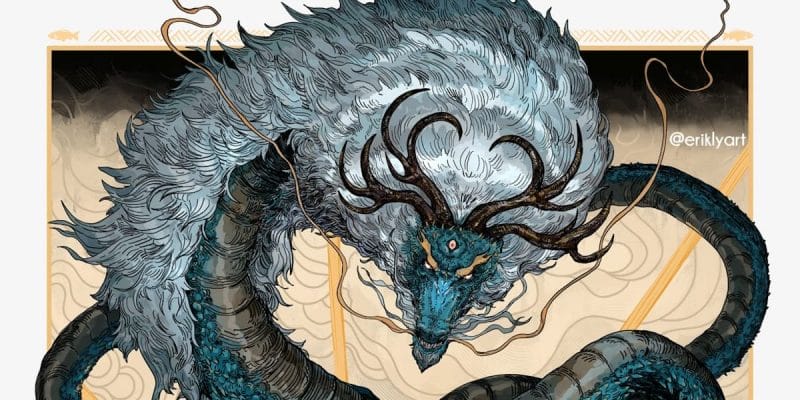Interview With Katsura Sunshine
Location: Anime NYC 2022
Interview Date: 11/18/2022
Editor: Samantha Ferreira
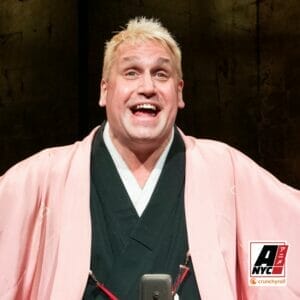 WhittyMoon: Are you of Japanese descent? If not, how did you get into rakugo?
WhittyMoon: Are you of Japanese descent? If not, how did you get into rakugo?
Katsura Sunshine: To my knowledge, I’m not of Japanese descent. I fell in love with Japan fairly quickly, so some people have said maybe in a former life.
I went to Japan because I was writing musicals. My main area of study was ancient Greek comic theater. I read an article by a scholar that said that ancient Greek theater, which was around 2500 years ago, and Japanese traditional theater, Noh, and Kabuki, had a number of coincidental similarities to Greek theater. Noh is older (14th century) and kabuki is only around 400 years old, Edo period. Miles and millennia away from each other, there were all these similarities. I thought to myself “I have to see kabuki.”
There was no Google at the time. This was 23 years ago. No YouTube, so you had to go to check it out. That’s probably a good thing since I might have just Googled it and never gone to Japan. That’s what brought me to Japan in the first place.
I was just going to study some kabuki theater and go back to writing musicals in Toronto, but on my third day in Japan, I loved it. I fell in love with Japan. The main thing that made me fall in love with Japan is that it’s super modern, and almost futuristic, to the extent that futuristic movies like Blade Runner are based on Tokyo. It feels like that when you go there. And yet, you go down a little side street and there’s a third-generation kimono shop with a lady in a kimono smoking a pipe and the customers are there talking and trying on kimonos.
The fact that old traditional Japan and super modern futuristic Japan existed in the same space, effortlessly, was to a Canadian like myself, super inspiring. It was something new.
Canada, like the United States, is an immigrant country. My parents immigrated from Slovenia. There’s a sense in Canada where everybody wants to hold on to the culture of the old country, or else they’ll lose it. I was in a Slovenian choir when I was a kid. It was very much a struggle to make sure we didn’t lose that culture.
In Japan, everyone kind of effortlessly participates in traditional culture on way or another. They’ll do traditional calligraphy, or one of the sports like kendo, or flower arrangement or tea ceremony. Everybody does something. No one says, “I have to preserve Japanese culture.” It’s something they enjoy or fell in love with when they were a kid or something their parents did and they enjoyed. It’s very effortless in that way, which really impressed me, so I stayed in Japan.
In my fifth year there, when I could speak Japanese to some extent, I was in a yakitori restaurant. They had a rakugo show there. The owner invited me “If you like Japanese culture, this is traditional comedy. You’d probably like it so come.”
That was literally love at first sight. As soon as I saw it I said “Okay, this is what I was born to do.” That was that.
That’s a really long answer. It’s not going to fit on a TikTok.
WhittyMoon: That’s totally fine. As a rakugo I expected a story answer.
Anime Herald: How do you differentiate yourself for all the other Western rakugo artists who have come to Japan and apprenticed themselves and become masters? All the other one of them?
Katsura Sunshine: That’s a fantastic question, because the previous one, Henry Black, or Kairakutei Black, was 100 years ago or so.
I was in Australia and there’s a guy who did his Ph.D. on Henry Black. He and I did a talk show. Henry Black helped bring recording technology from Germany to Japan. Because of that, he’s probably the earliest rakugo storyteller to have his voice recorded. You can hear him performing.
In his time, rakugo was starting to go stale. His master said, “We have to modernize rakugo to keep it interesting for people.” His master brought in stories from other countries. One of the most famous ghost stories he tells is from China. He took on an Australian apprentice and said, “take stories from the novels like Dickens and others and make them into rakugo stories.”
This is how I differentiate myself. At his point, he was bringing in stories from Europe to try and change rakugo. He never did it in English. He was very much in the rakugo world, trying to modernize it with his Japanese master.
I’m the complete opposite. I’m not trying to change rakugo at all. I’m trying to keep it as pure as I can, while translating it into English and bringing it to the rest of the world. It’s the complete opposite motivation. That’s a product of the times and the state of rakugo between then and now.
Now there are more rakugo storytellers than ever. I think it just crossed one thousand professional rakugo storytellers. So, it’s alive and well. There’s no need to change it. But, the world doesn’t know about rakugo.
Little by little, with the anime. Incredibly well done.
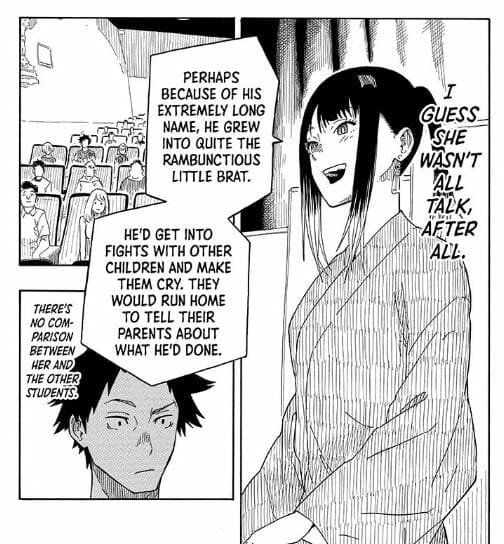
WhittyMoon: I’m happy you brought this up. There’s a manga that came out the middle of this year, Akane-banashi. It’s a shonen [series] with a teenage girl protagonist. She’s in the rakugo world, learning in the academy to become a professional storyteller with her master. There’s a specific story she’s doing called Jugemu.
Katsura Sunshine: The long name!
WhittyMoon: They did it in the anime in a song. I’m wondering if there are any rakugo stories that you know of that have been modernized?
Katsura Sunshine: That’s a super famous story. NHK had a kids’ program where they taught children to memorize that long name. It had been turned into songs before that.
WhittyMoon: In America we have John Jacob Jingle Heimer Schmidt. Are there any rakugo stories that are similar in that manner where you can think of similar Western stories?
Katsura Sunshine: There is some cross-pollination. For example, the famous story Shinigami, the God of Death, was originally from The Brothers Grimm. Now it’s a super famous rakugo story. There’s also an Italian opera of it. It’s not that well known, but there is a recording of it (Crispino e la comare).
There’s a story called “The Zoo.” The tiger in the zoo dies so they get a guy to dress up as the tiger to fool the customers. In the end, they stage an animal battle and let a lion into the tiger’s cage. The guy thinks he’s going to be eaten when the lion says, “Don’t worry, I’m also a paid actor.”
That started out as a British short joke. 100 years ago. Somebody spun it out to a fifteen-minute story. That kind of cross-pollination exists a lot.
Between the art forms in Japan, there are rakugo stories about kabuki, and kabuki plays about rakugo.
The manga you’re talking about (Akane-banashi) hasn’t been turned into an anime yet, has it?
WhittyMoon: Not yet. It’s still very new. It’s in Shonen Jump. They show how she performs and how she speaks. That’s what got me interested in rakugo.
Katsura Sunshine: It’s interesting that they picked a female becoming a rakugo storyteller. Five years ago, there was an NHK Asadora, morning drama, I think it’s 20 minutes every morning that goes along for a year. Five years ago, they did one in Osaka called Chiritotechin. It’s about a young lady becoming a rakugo storyteller. Rakugo is very much a man’s world, so it’s a lot of her trials and tribulations, becoming an apprentice. Because of it a lot of young women joined the ranks of rakugo storytellers, especially in Osaka.
It’s interesting. The oldest female master, she’s in Osaka. She’s only in her mid-sixties. That’s how recently women have joined the ranks of rakugo. Now I think roughly one-tenth of the storytellers are women.
(Editor’s note: Chiritotechin came out in 2007. Time is a flat circle.)
Anime Herald: Your original background was Greek theater. Have you turned any of those stories into rakugo?
Kastura Sunshine: I have…
Not. The only thing I’ve turned into rakugo is “Who’s On First.” I turned it into an Osaka-dialect rakugo. I only do that one in Japan. It took me a while to get it right.
Anime Herald: Abbot and Costello
Kastura Sunshine: Abbot and Costello speaking Osaka dialect. Yeah.
Anime Herald: What were the audience reactions to that one?
Katsura Sunshine: Such an interesting question.
Just to start, giving the players funny names. Starting right in there, it wasn’t that interesting. Just blank stares. When I did it, I thought “There’s a way to do this where people will laugh. I’m sure of it.”
My rakugo brothers helped me with it and gave me such good advice. A Japanese audience could not immediately suspend belief and go into that world. They needed some logical reason. I wrote an introduction “We’ve got a great team this year, but their all foreigners. They have these long names. On first, he’s Greek. I can’t pronounce his name. Let’s shorten it to Dare (who). The Italian guy on second, I can’t pronounce his name either. Let’s shorten it to Nani (what). The third baseman. Our third baseman is from Denmark, Shiranai (I don’t know).”
Completely different reaction. In rakugo you have the makura, the pillow part, which is the introduction that leads into the theme of the story. At first, I was leading into [this] as a baseball story, with some baseball jokes. Big mistake. Half my audience might have no interest in baseball. Instead, I talked about the difference between Canadian names and Japanese names. I talk about how Canada is all immigrants with some crazy spellings I can’t pronounce. Now, instead of it being a baseball story, it’s a communication story. And then everyone got into it. Just the way you lead into it can totally change how the story is received.
Short answer, no Greek yet.
WhittyMoon: Have you experienced any backlash for trying to spread rakugo?
Katsura Sunshine: No. Not really. Nothing.
WhittyMoon: I love to hear that.
Katsura Sunshine: Maybe they’re talking behind my back. You sometimes hear mumbles of cultural appropriation. This is just so far from that. 80% of the production team on my Broadway show is Japanese. Fifty-nine of the sixty investors in the show are Japanese. I apprenticed under a Japanese master. There are enough Japanese fans in the audience laughing that anyone who suspected something was being appropriated quickly get those thoughts dispelled.
We’ve had to be on top of it, in terms of bringing it to the press, but I’ve never been accused of anything.
Anime Herald: That’s the thing, you paid your dues, you did the three years of apprenticeship.
Katsura Sunshine: Yeah. Appropriate means stealing something. I didn’t steal anything. I earned it. I cleaned my master’s house every day for three years. If I appropriated anything from him, I would have been kicked out. I wouldn’t have the name Katsura, I’ll tell you that.
So fortunately, none of that has ever come up. (Knocks on wood)
Anime Herald: You mentioned that your fellow rakugo masters helped you refine your Abbot & Costello routine. Is that common, for rakugo masters to help refine each other’s acts?
Katsura Sunshine: Absolutely. I’m kind of in a solo show here and in London, because I can’t travel with fellow storytellers, but in Japan you’re usually with a band of people, three, four, or five. It could be like a stand-up comedy show unless it’s a solo show. A lot of times you’ll do shows with people in your own family, apprentices of the same master.
When I do my stories, they’ll listen to them from the side of the stage. They’ll say “Hey, that’s a good story, but here’s what you might want to try.”
Their advice is excellent. Almost 99% of what they say is a complete revelation. I’m so glad I did the story here because it just got better. It’s very common.
There’s very much a hierarchy seniority system. The seniors will look out for you. If they think there’s something you could improve upon, they’ll always tell you. Especially at the drinking party after the performance, so you can relax and get into the discussion about rakugo. So yeah, very common.
Anime Herald: Have you risen up the hierarchy? You’ve been doing it for quite a while now.
Katsura Sunshine: Yeah. I’m in my fifteenth year, so I’m considered a master. It’s just by the number of years. If someone wanted to be an apprentice, I guess I could take them.
My master told me a couple years ago “Take apprentices, but don’t take Japanese apprentices, because you’ll teach them your funny Japanese.”
If I was going to teach someone my funny Japanese, it would be a foreigner. I don’t think a Japanese person is going to apprentice with me and start talking Japanese like a Canadian. But anyway, you can’t talk back to the masters.
WhittyMoon: Do you have a favorite story that you’ve performed?
Katsura Sunshine: Yeah. I have a couple. I love the story “Chiritotechin.” It’s a story about rotten tofu. There’s a guest at the main character’s birthday party. This guest knows all food and says everything is boring, so they fool him into eating some rotten tofu with some hot peppers in it. They dress it up as a sake delicacy. He eats it and goes into convulsions, and the says, “Delicious! I’ve never had anything better.” “Do you want some more?” “No, no, no.” “What does it taste like?” “Remarkably like rotten tofu.”
In the story, there’s so much great relevant Japanese culture, sake pouring, compliments, over-complimenting, denying compliments. In my introduction, the makura, the pillow part, which is like the stand-up comedy part, just teaching Japanese manners, One, gives people an insight into Japanese culture, and two, has people hysterically laughing because the culture’s so detailed. I teach people drinking manners, how to react to a compliment, the receiver has to deny the compliment, and then the complimentor has to reiterate the compliment. You don’t know where to finish. All of those things go into the story and then they all come back, and people recognize them. It forms a perfect Japanese set where if you just saw this 45-minute performance you’d know a lot about Japan that you didn’t coming in.
WhittyMoon: Do you have one that you don’t like performing? One of your least favorites.
Katsura Sunshine: No. The ones I don’t like performing, I just don’t perform. Now, if you ask me if there are some stories that are harder to translate, stories that rely on a lot of wordplay. That’s hard to translate.
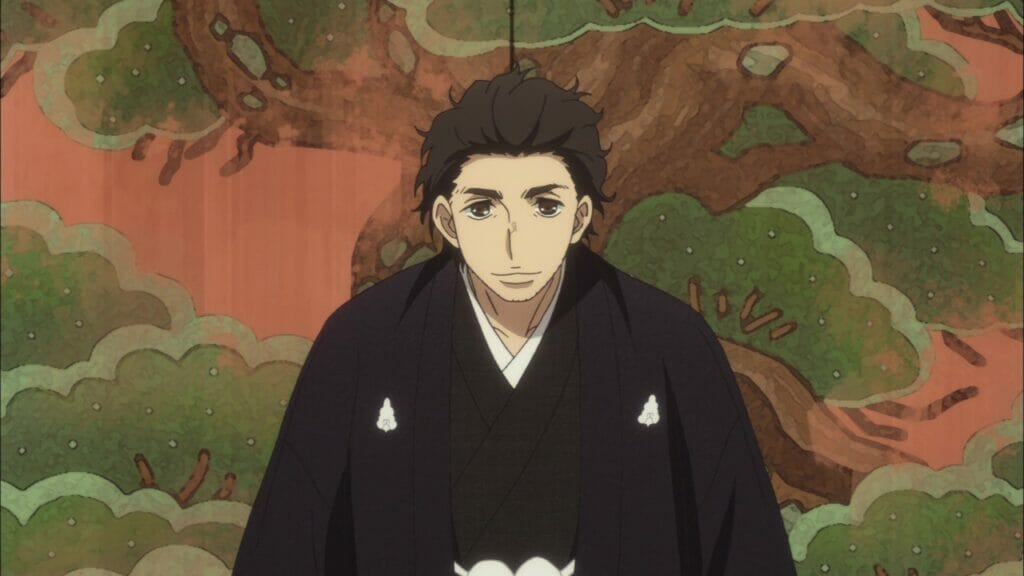
Anime Herald: One of the things that seems easy to translate is love of alcohol. Is that part of rakugo culture, as it is with office culture?
Katsura Sunshine: After a rakugo show, the storytellers, and maybe the inside staff, will go out drinking after a show 90% of the time, unless there’s a reason not to. In offices, some of the lower-level staff might go out of a sense of obligation. For rakugo storytellers, I’ve never heard of someone who didn’t want to go out drinking with their seniors.
One of the reasons is, even the highest level masters, at a certain point in the drinking party they’ll say to throw out manners, just relax and have a drink. Some of the older masters will pour drinks for the younger guys, and the younger guy will say “No, no, I need to be pouring for you.” It will destroy the barriers.
So much of the conversation revolves around rakugo. You’ll learn so much and start to get along with the different seniors. Often, you’ll be performing with people you didn’t know, so getting to know them is great.
A lot of times there will be job transactions, lining up future shows, things like that.
On stage too. There are a lot of characters who drink. The technique to make it look delicious is you don’t bring the cup to your mouth. The cup stays there, and you lean forward and try to sip as you slowly tip it back. It’s not something someone would actually do, but it makes it look more realistic on stage.
WhittyMoon: You said that wordplay is hard to translate. Are there any other difficulties you faced translating rakugo stories from Japanese to English on a literary level.
Katsura Sunshine: Yeah. At first, talking to my master, we were thinking of how to bring the stories to different cultures, Canadians and Americans, so we thought of changing things, but that didn’t go very well. I’ll give you one example: my master has a story “Homework.” There’s a grade six student who doesn’t understand the word problems. He asks his father to help him, and his father gets confused. His father asks a guy at work the next day. The first problem is about turtles and cranes. These are auspicious animals in Japanese culture. It’s a very common word problem in Japan as well.
(Editor’s note: “Tsuru-Kame” is a good luck symbol.)
On a warm Summer’s evening, around a quiet pond, forest green turtles and red crested cranes have gathered together. If you count their heads there are sixteen heads altogether, if you count their feet there are forty-four feet altogether. How many turtles and how many cranes have gathered together under that warm waxing moon on that warm Summer’s day.
We were thinking “Turtles are cool, but cranes? We need a funnier animal. Sunshine, when you go to Canada, turn them into flamingos.” At first, I thought “That’s genius. Flamingo’s are funny, picture them, even the word ‘flamingo’ is funny.”
But when I did it, it destroyed the Japanese-ness of the story. I didn’t calculate that at first. If I’m presenting a Japanese family and bring flamingos into it, people think of Florida, not Japan. Bringing it back to cranes didn’t get the laughs at first, but it preserved the story.
I realized very quickly that I shouldn’t be screwing with the stories. It should be as much of a literal translation as possible.
The other challenge for me, that wouldn’t exist for a Japanese person performing in English, is that I’m not Japanese. I’m Canadian. I have this face. So, if I’m performing Japanese characters, I realized that if I use a lot of slang and vernacular and that kind of thing, it will be a Canadian atmosphere instead of Japanese. But I can’t put on a Japanese accent, that would just be weird.
I realized that when I do my translations, I have to make sure there’s no idioms. No slang. I try to get rid of any conjunctions. I don’t say “Can’t.” I say “Cannot.” It’s very straight, textbook English. I call it “English that doesn’t exist in any country.” Because it’s this kind of a flat English that you wouldn’t hear anywhere, so it’s a blank canvas, where through characterization and painting the situation, you can paint a Japanese scene. The reason a Japanese person wouldn’t have to worry about that is because they’d be talking in their own way in a Japanese accent. That’s one of my challenges.
WhittyMoon: Would you say that by using the flat English, that’s a way to make it easier to tell a story so that when you do incorporate any accent it’s more of a contrast, or do you keep the flat English throughout?
Katsura Sunshine: I use flat English throughout the whole story. My approach is to make sure language doesn’t get in the way of the story. I can’t do anything with English to enhance the story. The painting of the picture in the mind of the audience has to come from something other than language. Anything I try to do special with language is going to interfere. As long as I can keep it flat and portray the characters… it’s the same thing where I don’t want to be wearing a super rainbow-colored kimono that would distract from the story. You want to have a solid-colored kimono that won’t get in the way of the story.
That’s actually a technique in rakugo. In the beginning of the story the characters are a bit exaggerated. If you really pay attention, the characters will become less and less exaggerated as the story goes on.
Katsura Sunshine: In theater in the West, we talk about staying in character. The character should remain the character unless there’s a dramatic reason for them to change. But with rakugo, you don’t want to tire the audience out. If you exaggerate the characters throughout the entire story, that’s just going to exhaust them. And the characterization isn’t where the laughs come from, it’s the situation.
A good example: My master has a golf story about a very famous samurai in Japan, Sakamoto Ryōma. He’s playing golf with some of his contemporaries. Historically this was possible. Golf had already been invented in Scotland. It could have come to Japan. He was from a part of Japan that had the Tosa accent. It’s different from any kind of Japanese accent spoken today. And this is a long story, over 45 minutes long. My master speaks the Tosa accent for the first 3-4 minutes. And then he slowly brings it back to his Osaka dialect with just hints of it. The people of the audience say to him after the show “I can’t believe you spoke the Tosa accent for 45 minutes! That’s incredible!”
But if he were to actually speak with that accent for 45 minutes, the audience would be exhausted. So, it is a rakugo technique to let as little interfere with the content of the story as possible. That’s kind of what I do in English with the English from no country. One of the unintentional results of this, and I was surprised myself, is that when I do rakugo in Japan in English, people who have learned English as a second language find it super easy to understand. “Your English is super easy to understand!”
(Editor’s note: Katsura Sunshine: The Man From Nowhere)
At first, I wondered “Why is that?” Then I realized, I was speaking very clear textbook English. But the intention was a completely different thing. It was to erase the country. But it makes it super easy to understand.
Anime Herald: When you first learned to speak that way on stage, was it a gradual process, or was it something you realized just like that?
Katsura Sunshine: You know what it was? There were certain jokes in the story, which I know are funny in Japanese, that weren’t hitting in English. I realized I was using English slang. I think was jarring for the audience because it took them out of the Japanese context. As soon as I corrected the slang into simple standard language… the slang places you somewhere… it places you in the States or… and once I discovered that, I realized “Oh, I have to get rid of the slang.” That was it.
So, it did hit me quite suddenly. It was the result of people not laughing. Which was my fault. It’s painful, for a comedian, for people to not laugh. I need a laugh here, so what’s wrong? There’s nothing wrong with the story. It’s worked for 400 years. It’s got to be me. I discovered that very early. I just corrected the script. It made my job 100 times easier. I’m not worried about language. Just keep it super simple.
WhittyMoon: After discovering rakugo, how soon after that did you start working on rakugo?
Katsura Sunshine: I was a fan for three years. I finally found the master I wanted to apprentice to and asked him. He accepted me and I started my apprenticeship in 2008.
WhittyMoon: Rakugo has the three tiers of apprenticeship of zenza, futatsume and shin’uchi?
Katsura Sunshine: I apprenticed in Osaka. They got rid of those ranks so you wont see them used in Osaka. You’ll still see them in Tokyo.
They used to use them in Osaka, but when people became a shin’uchi, the masters, their taxes would go up. Osaka is a merchant city, a traditional business city. The rakugo masters hated that because they weren’t making any more money, but their taxes went up. So they got rid of the ranks to obscure that.
WhittyMoon: I was wondering since you did your apprenticeship in three years, to see how you did it with the three-tier scale, but it’s so funny that they took it out.
Katsura Sunshine: It’s very Osaka. When I tell that story, it’s not very well known, so when I tell people in Tokyo, “You want to know why? It’s because their taxes went up.” They say “Oh, that’s very Osaka!”
Anime Herald: You obviously fell in love with rakugo, and various parts of Japanese culture. What are the other parts of Japanese culture you’ve fallen in love with?
Katsura Sunshine: Oh my god, I love Japanese food, holy smokes. I love kabuki, I love the traditional theater. The arts. The fact that everybody does something traditional. I really love that.
I can’t do calligraphy or flower arrangement, but just witnessing it, seeing it. Tea ceremony. Those cultural things, and the theater arts. A completely different way of bringing stories to the stage than we have here.
WhittyMoon: You’ve lived in Japan ever since when you originally decided to move there?
Katsura Sunshine: Yes.
WhittyMoon: How has your Japanese gotten?
Katsura Sunshine: My English has started to become a little shaky. *Laughs*
My Japanese is okay. You’ve got to keep studying. And I can’t read or write very well. I never really learned. Traditionally, storytellers were illiterate. Because this is passed down orally. The master would tell the story three times and the fourth time the apprentices would have to tell it back.
WhittyMoon: You went to Japan without knowing Japanese. How did that affect your apprenticeship?
Katsura Sunshine: During my apprenticeship, the biggest problem was that I couldn’t really use the politest forms of the language. That would be due for my master and the other masters. I could speak politely, but not really politely. Not speaking really politely is actually being rude. That was something I had to study because I could see my master bristle whenever I opened my mouth. Looking back, I feel bad about that now.
That took a while to learn, but not too long. When you put your mind to it… you’re hearing the other apprentices talk to the masters all day. I listened and repeated.
WhittyMoon: And the stories that you learned, did you learn them in Japanese?
Katsura Sunshine: I tend to learn them in Japanese and then translate them into English after. I would listen to my master’s tapes or CDs or something like that.
Anime Herald: Clearly your master was a very patient person.
Katsura Sunshine: Oh yes.
Anime Herald: Can you give us a few words about him and his storytelling?
Katsura Sunshine: Yes. As well as being one of the most famous television personalities in Japan over the past 50 years, he is also maybe one of the most prolific authors of modern original rakugo stories. He has over 300 to his name. I think he started doing some traditional stories just for fun, during Covid, because he had nothing else to do. He did only his own stories for all of the years, certainly, during my apprenticeship he only did his own stories. All of his apprentices love doing his stories. That’s part of why they joined him.
I do 50-50, but I love doing his stories. His stories work really well in English as well. Yesterday I did one of his (Homework) and one traditional one (The Zoo). That’s one of the great things about being his apprentice. Also, you’re beside a comic genius for three years. It’s incredible. Not just rakugo comedy, his stuff on television.
There are games that everyone plays, rock, paper, scissors. After that people say “Acchi Muite Hoi!” and point. You have to look in a different direction than the way they pointed. He invented that for a television show. Almost no one in Japan knows that. They needed a game for him and the other stars to play, and it became popular. It’s crazy how much Japanese culture my master is responsible before.
(Editor’s note: To be clear, he invented “Acchi Muite Hoi!”)
I was not interested in fashion until I met my master. He dresses to the nines every day. With Western clothing and his kimonos are of the finest silk. Just touching them, it’s like, “Wow! This is completely different.” His suits, even his jeans and shirt ensembles, he’s always dressed like a star. Now, I’ve opened my own fashion line. I design denim kimonos. I never would have thought to do that before meeting him. The website is www.sunshinedenimkimono.com.
(Editor’s note: Katsura Sunshine’s master, Katsura Bunshi VI, had a cameo appearance in Porco Rosso as Mr. Piccolo. He was known as Katsura Sanshi at the time.)


